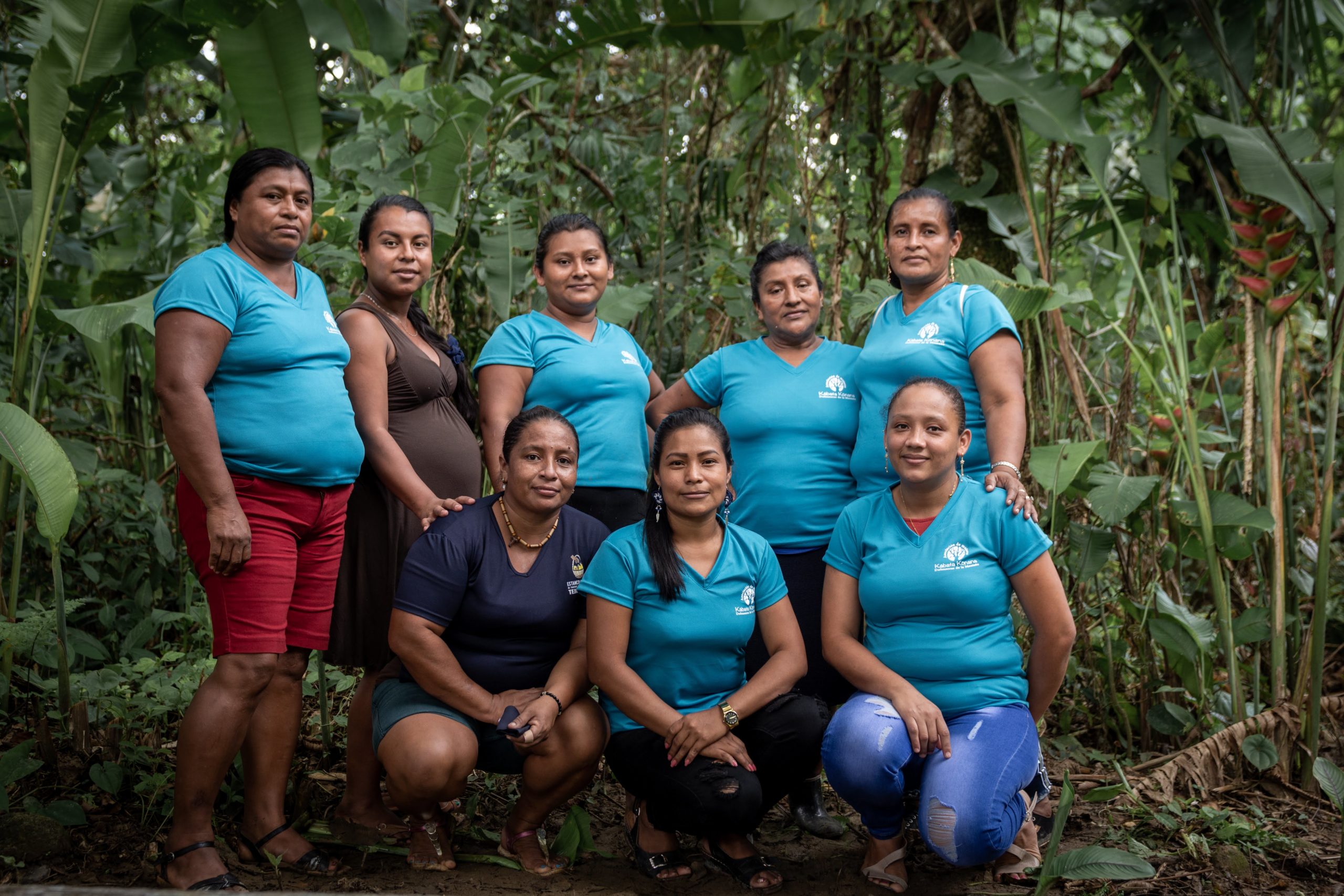At the regional level, this Central American country is recognized for its high levels of democratic quality and human development. However, it has been unable to resolve territorial disputes through political dialogue. While mestizo settlers occupy the land for cattle ranching and monoculture, Indigenous peoples are reclaiming their territories through direct action. Faced with the State’s inaction, Indigenous communities and their leaders call for peace and demand respect for their territorial rights.
“There is nothing romantic about land recovery when violence is what surfaces. For us, it means risking our lives, our safety, losing the right to live peacefully and have a healthy life.”
Elides Rivera – Bröran Indigenous Leader from Térraba
For centuries, Indigenous peoples have endured various episodes of structural and systemic violence, both during external colonization and through internal colonialism—that is, the violence and dispossession they faced after the independence from 19th-century hegemonic powers. This gave rise to different social structures shaped by racism and labor control intrinsic to capitalism. Without a doubt, the coloniality of power is the core element that has structured society in Latin America.
Within this context of internal colonialism, the recovery of ancestral lands through direct action by Indigenous peoples in Costa Rica stands out. These actions have sparked waves of violence threatening the safety of these communities. There are two starkly opposing and contradictory views on the matter. On one hand, Indigenous communities seek to reclaim land because it would potentially restore peace with nature and secure the futures of their children. On the other hand, settlers accuse the Indigenous people of being the ones responsible for the violence, not them. This situation highlights a lack of a culture of peace.
Indigenous women play a vital role in these land recovery efforts, contributing their perspectives and strategies for conflict resolution from a gendered approach. It’s important to emphasize that the practices of non-Indigenous people, whether legally or illegally occupying ancestral lands, are incompatible with native cultures. This incompatibility fuels conflicts that range from disputes over land use to direct clashes during the de facto recoveries.
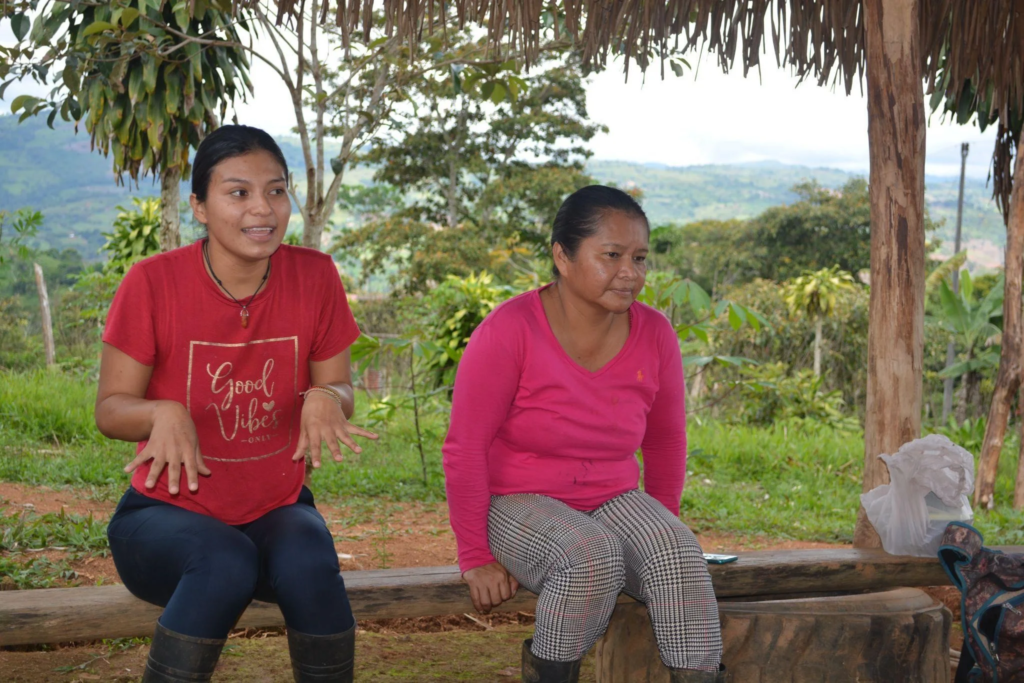
Legal recognition of Indigenous Peoples in Costa Rica
In Costa Rica, there are eight indigenous peoples: Huetar, Maleku, Bribri, Cabécar, Brunka, Ngäbe, Bröran, and Chorotega. According to the 2010 National Census, these groups number just over 100,000 individuals, representing 2.4% of the population and residing in 3,344 square kilometers (7% of the national territory). In a country where nearly 20% of the population lives below the poverty line, indigenous peoples experience even higher rates of poverty: Cabécar at 94.3%; Ngäbe at 87%; Bröran at 85%; Bribri at 70.8%; Brunka at 60.7%; Maleku at 44.3%; Chorotega at 35.5%; and Huetar at 34.2%.
The Political Constitution of the Republic of Costa Rica recognizes the country’s cultural diversity in Article 1: “Costa Rica is a democratic, free, independent, multi-ethnic, and multicultural Republic.” Additionally, Article 76 acknowledges indigenous languages and commits the state to their preservation: “Spanish is the official language of the Nation. However, the State shall ensure the maintenance and cultivation of national indigenous languages.”
In Costa Rica, there are eight indigenous peoples: Huetar, Maleku, Bribri, Cabécar, Brunka, Ngäbe, Bröran, and Chorotega. According to the 2010 National Census, these groups number just over 100,000 individuals, representing 2.4% of the population.
In Costa Rica, there are eight indigenous peoples: Huetar, Maleku, Bribri, Cabécar, Brunka, Ngäbe, Bröran, and Chorotega.
Regarding the recognition of land rights, Indigenous Law No. 6172 of 1977 defines indigenous peoples as follows: ‘Indigenous people are those who belong to ethnic groups descended directly from pre-Columbian civilizations and who maintain their own identity.’ Furthermore, Article 2 states that communities have full legal capacity to acquire rights and undertake obligations of all kinds.
Article 3 stipulates: “Indigenous reserves are inalienable, imprescriptible, non-transferable, and exclusively for the indigenous communities that inhabit them. Non-indigenous individuals are prohibited from leasing, renting, purchasing, or otherwise acquiring land or properties within these reserves. Indigenous people may only negotiate their land with other indigenous individuals. Any transfer or negotiation of land or improvements within indigenous reserves between indigenous and non-indigenous individuals is absolutely null and void, with the corresponding legal consequences (…).”
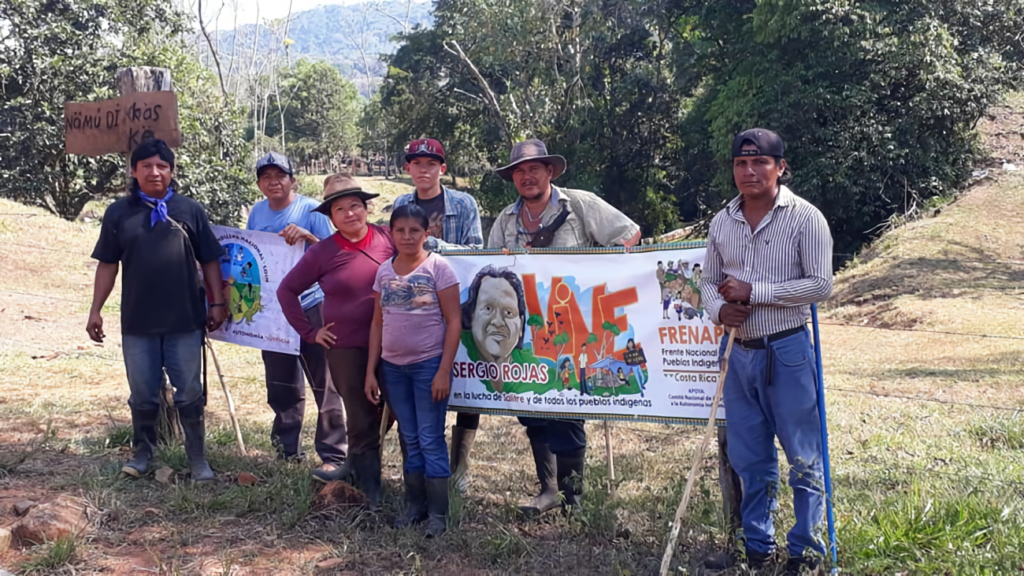
Recovery through de facto means
Despite the fact that indigenous lands have had legal protection since 1977 and that Costa Rica is a signatory to ILO Convention 169, which is the most significant treaty for protecting the collective and individual rights of indigenous and tribal peoples, these communities continue to suffer from the dispossession of their ancestral territories.
Indigenous leader Pablo Sibar of the Broran people states: “We have documentation from 1940-1956 where the elders were already claiming that settlers were encroaching on their lands and asking the government to quickly resolve the land rights issue because they were losing their land.” Although their claims are legitimate and legal, the lack of state response has led communities to resort to recovery through de facto means, resulting in violent confrontations. These conflicts stem from opposing, adverse, and incompatible interests between indigenous and non-indigenous people.
“These recoveries become very violent; we face many risks,” Sibar states. The Bröran leader cannot forget the murder of his colleague Jhery Rivera in February 2020, a case that remains unsolved. “It was very violent; we were expelled from one of the farms we were supporting and had to flee, and were nearly lynched.” This form of de facto recovery has resulted in the deaths of two indigenous people at the hands of settlers, landowners, or others affected by these actions.
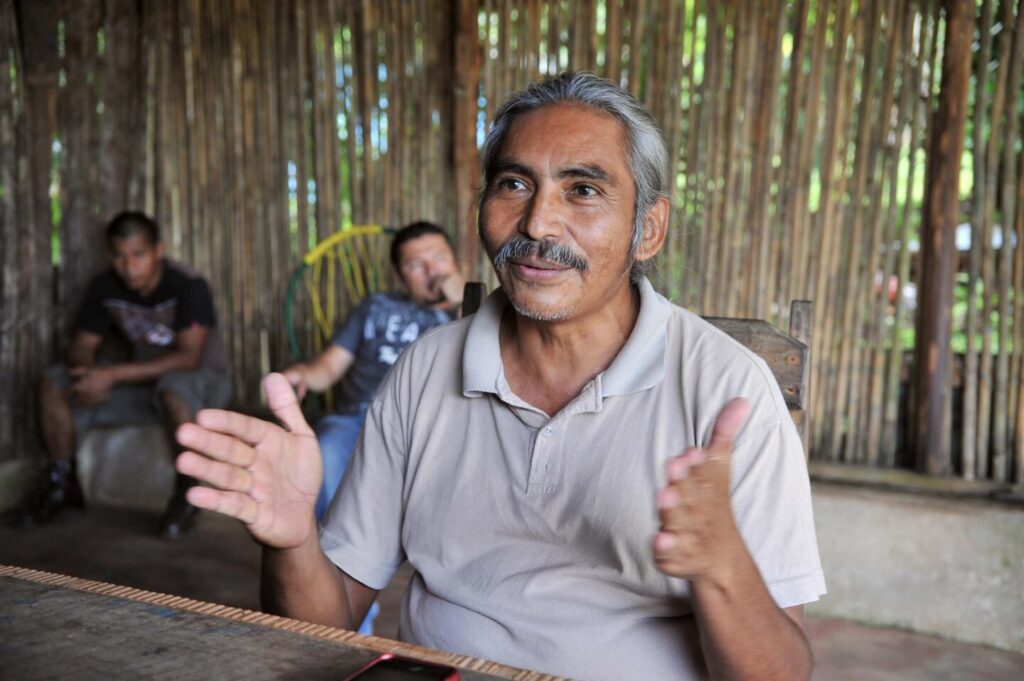
The Indigenous perspective: the just right
In Costa Rica, there is a dispute between two groups with opposing objectives: maintaining the land for economic exploitation or reclaiming it to ensure the survival of future generations. This conflict arises from two incompatible views of land ownership. While settlers seek to engage in livestock farming and monoculture, indigenous communities aim to maintain a harmonious relationship with nature. Worse still, having exhausted legal avenues, indigenous people have no option but to resort to de facto land occupation, which has led to violence and death.
Pablo Sibar explains in an interview with Deutsche Welle: “I am part of the recovery effort. Here, we are 16 families consisting of 100 people who had nothing, no land to farm. We arrived at 4 in the morning, settled on the farm, and issued a statement saying that the land had been recovered through de facto means, and that the person who had been occupying the land had a reasonable amount of time to remove their belongings, as the land rightfully belonged to us.”
Elides Rivera: “To enjoy our space, to live without fear. At no point are we breaking the law. We are demanding a right that belongs to us as individuals and as women.”
The testimony of Elides Rivera, a leader of the Bröran people, also calls for peace and explains the de facto land recoveries as a matter of rightful justice: “I wish my people had enough land to live with our children, where we could grow our food and live without so much violence. To enjoy our space, to live without fear. At no point are we breaking the law. We are demanding a right that belongs to us as individuals and as women.”
Meanwhile, the University of Costa Rica has pointed out the ongoing violation of the rights of the country’s indigenous peoples: “The dire situation in indigenous territories is unjust, unbearable, and unsustainable. It also reveals a systematic violation of the fundamental rights of these communities, the inaction and ineffectiveness of the state, and its complacency with the aggressors. This carries very serious responsibilities that must be assumed by Costa Rican society as a whole, but especially by political, technical, legislative, executive, and judicial authorities.”
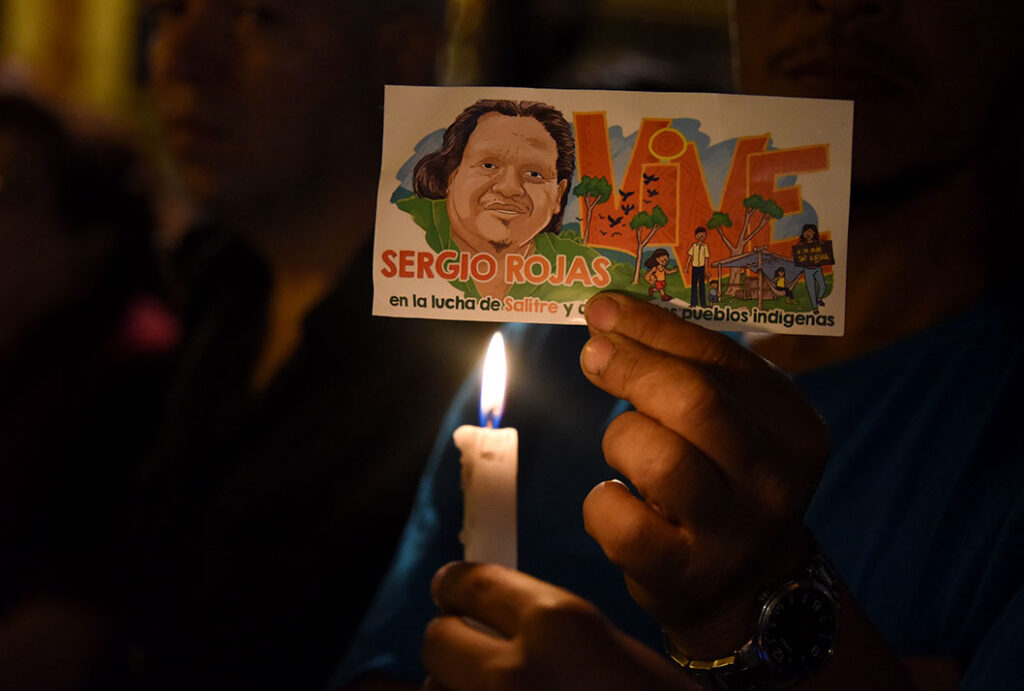
Law and de facto occupation
While settlers see indigenous people as lazy, idle, and obstacles to development, indigenous communities view mestizos as usurpers, invaders, and destroyers of Mother Earth. This clash of incompatible interests has led to extreme levels of violence, worsened by the inefficiency of officials, state inaction, and mismanagement in the distribution of scarce resources. Needless to say, the violence undermines the peace and harmony of the population.
The lack of legal action and the absence of state response pushes the parties involved to resolve the conflict through their own means, which often turn violent. As the judiciary’s inaction favors non-indigenous interests, indigenous communities turn to de facto land recoveries as a way to reclaim their rights.
The role of the state, NGOs, and human rights organizations is essential to achieving peace in Costa Rica’s indigenous territories. Indigenous women play a critical role in fostering dialogue, reaching agreements, and ensuring security in their territories. They know that a peaceful environment is the greatest legacy they can leave to their children and to nature.
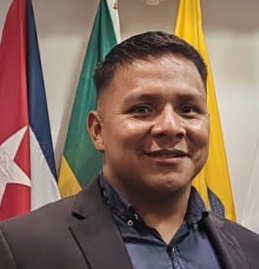
Larry Salomon Pedro is a Mayangna indigenous person from Nicaragua and a Master's student in Conflict Resolution, Peace, and Development (CRPD) at the United Nations-mandated University for Peace.
